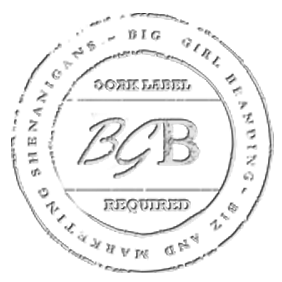This is a short and sweet guest post courtesy of Lisa Hann.
It’s not something we’ve discussed here on BGB before, so I thought you might find it an interesting read.
Speaking the right message to the right people is vital to successful branding and effective marketing.
Here at BGB I try to speak to a mix of folks because I know there is a mix of folks that read this blog.
However I have seen blogs (Mommy blogs anyone?) that certainly speak more to women than men.
And we all know of sites like The Art of Manliness… needless to say, their written voice and their content speaks primarily to men.
But what about your site? Who is your primary audience? Does your content and voice speak to them? Please make Lisa feel welcome by dropping a thought or two in the comments below.
You can’t just stick any old content on your website.
Your website needs content that matters to the people who read it.
Your content needs to SPEAK to them.
It should be written in a voice that represents your brand, and the same writing style should be followed in all of your content across platforms.
Your brand voice mostly depends on your target audience.
- Who are the customers of your business?
- What type of people are you trying to reach?
- What type of voice will they respond to the most?
One of the characteristics to consider is gender. If your target audience is comprised entirely, or mostly, of one gender, should you use a gender-based voice in your content?
A Mixed Audience
There are three types of businesses: Those that appeal to women, those that appeal to men, and those that appeal to women and men. What category does your business fall under?
Most businesses have a target audience of both men and women. Your business might have both genders as potential customers, but you may predominantly target just one. If your audience is mixed, a gender-based voice isn’t a good idea for your content.
Your content should be gender-neutral so that you don’t make a portion of your audience feel excluded. Using a female voice for your content, for example, may make men feel unwelcome or uncomfortable.
In general, people usually like to feel that they’re different than the group, i.e. men may not want to shop in a store that they think is tailored to women, and vice versa.
Using a Gender-Based Voice
If your target audience and customer base is predominately one gender, using a gender-based voice in your website content is a good idea. When members of your target audience visit your website, they’ll feel more at ease with content that’s written specifically for them.
It’s a good idea, however, not to use language or say things that exclude others. Even if you are a business that’s for women, it’s not necessarily a good idea to say something that could be polarizing to men.
Authenticity and Stereotyping
It’s important that your voice – whatever voice you use – is authentic. If you use a gender-based voice for your content, someone of that gender should be writing it. If a member of the opposite sex tries to fake it, it may come off sounding insincere, and you could lose the respect of your audience.
Also, avoid stereotyping at all costs. Men and women are not so different, and you do not want to write content that reinforces any assumed gender roles. For example, don’t assume that all women are mothers or like the color pink. A gender-based voice should be subtle and inoffensive.
No matter what voice you decide to use in your content, be consistent. If you decide on a gender-based voice, make sure you use it throughout your website so there is cohesion.
And whether your audience is female, male, or mixed, the essential defining characteristic of your content should be that it’s good.
That’s all folks! This is the end of the post. Did you like it? Find it interesting? Do tell! And feel free to share it if you found it useful. BGB thanks you. 😉

